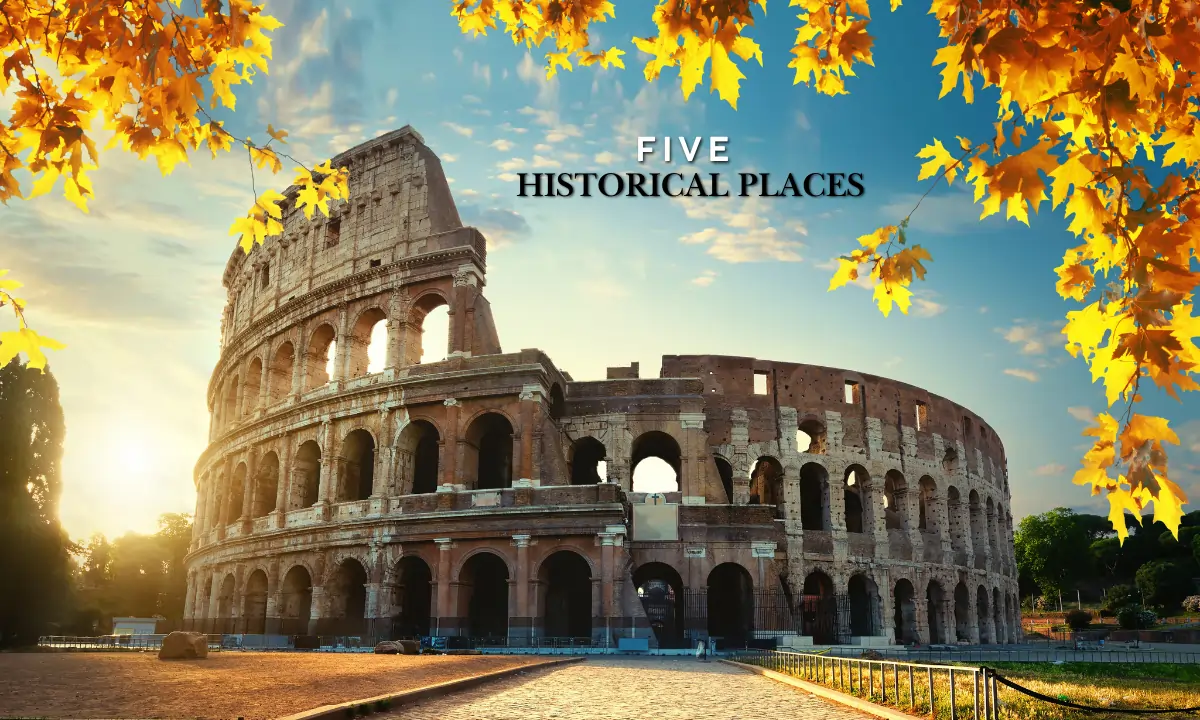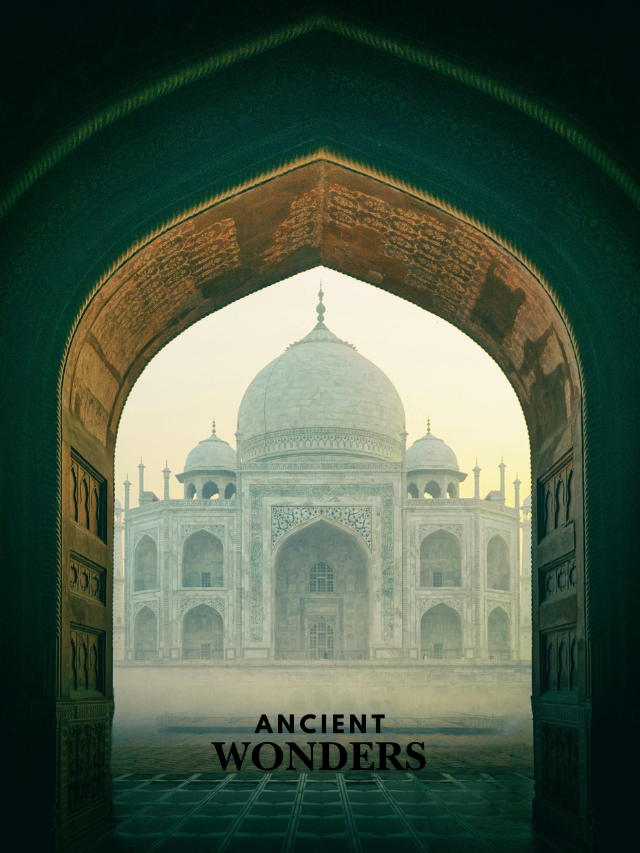Five Historical Places around the globe
From ancient times to the modern era, there are many historical places around the world which has vivid culture that remains as it were a long time ago. The history of the world is filled with mysteries, and there are several historical places that increase the willingness of people to unfold many secrets that are surrounded by cultural and historical events of such historical places. The scenic beauty of historical places also drives travelers around the globe to witness its cultural heritage by visiting such places. A few names of such locations are the Pyramids of Giza, The Taj Mahal, The Great Wall of China, the Colosseum and Machu Picchu.
Pyramids of Giza
The pyramids of Giza were built during a time when Egypt was recognized as one of the most powerful and richest nations in the globe. The culture of Egypt still surrounds the Great Pyramids of Giza, which is the main structure in history. The Pyramid of Giza is the biggest Egyptian Pyramid, and its huge stature highlights the unique culture of the pharaoh, who was the king of ancient Egypt. The Pyramid is considered as oldest of the Seven Wonders of Ancient Egypt and the only wonder that has remained as it is still today.
In addition, the pyramids were built from the inception of the Old Kingdom to the close of the Ptolemaic dynasty in the fourth century AD. There is ample time that has passed since the creation of the Pyramids of Giza, which is around 4,000 years, but they retain much of their cultural mystery, offering visitors to witness this historical place that has a rich culture.
The Taj Mahal
The Taj Mahal is another notable historical place in the world located in India. This historical monument is situated on the right bank of the Yamuna River, surrounding a large Mughal garden that covers around 17 hectares in the Agra District in Uttar Pradesh. Taj Mahal was built by Mughal Emperor Shah Jahan in memory of his wife Mumtaz Mahal and its construction started in 1632 AD and completed in 1648 AD with the main gateway, the guest house and the mosque.
The presence of various historical and Quranic writings in Arabic script has enabled the setting of the sequence of events of the Taj Mahal. This memorials one of the most popular architecture built by the Mughal Empire It reflects the culture of the ancient era and stands with its beauty and cultural heritage.
The Great Wall of China
The Great Wall of China is another glimpse of the history of china and its culture. The Great Wall of China was built over centuries by China’s emperors to protect the land from invaders. In current years, this historical megastructure stretches for thousands of miles encompassing China’s northern border. The sections of the Great Wall of China around Beijing are very famous, and they were frequently renovated. In recent years, a large number of tourists have visited to witness the massiveness of ancient megastructures that uphold the culture of different parts of China, representing this nation as culturally vivid, which is enough to attract the positive attention of travel enthusiasts from different parts of the globe.
Colosseum
The Colosseum, called the Flavian Amphitheatre, highlights a testament to the majesty that reflects the ancient culture of Rome. The iconic megastructure built amid the Roman Empire served a variety of purposes that highlight the social and political environment of ancient Rome and the culture of this nation as well. The Colosseum played a significant role in ancient Rome in upholding social order and politics. Apart from that, the Colosseum symbolized Roman Engineering and Architecture and also served as a symbol of excellent engineering capability of this historical place where a large number of people every year visit to witness its beauty that remain intact over the millennia.
Machu Picchu
Machu Picchu is located in the middle of a tropical mountain forest in an extraordinarily beautiful setting 2,430 meters above sea level. This historical structure is a unique testament to the Inca civilization and is counted within the list of UNESCO World Heritage Sites. This has become a unique place for travelers that enable them to witness the history of Inca culture.
FAQ
1. What are the five historical places mentioned in the text?
The five historical places mentioned in the text are:
The Pyramids of Giza
The Taj Mahal
The Great Wall of China
The Colosseum
Machu Picchu
2. What is the significance of the Pyramids of Giza?
The Pyramids of Giza are significant for several reasons:
Cultural heritage: They are a symbol of ancient Egyptian culture and civilization.
Historical importance: They were built as tombs for pharaohs and their families.
Architectural marvel: The pyramids are impressive examples of ancient engineering and architecture.
3. What is the history behind the Taj Mahal?
The Taj Mahal was built by Mughal Emperor Shah Jahan in memory of his wife, Mumtaz Mahal. It is a symbol of love and a masterpiece of Mughal architecture.
4. What is the purpose of the Great Wall of China?
The Great Wall of China was built to protect the Chinese Empire from invaders. It is a symbol of China’s history and culture.
5. What is the significance of the Colosseum?
The Colosseum is a symbol of the Roman Empire and its culture. It was used for gladiatorial contests and public spectacles.
6. What is the historical significance of Machu Picchu?
Machu Picchu is a symbol of the Inca civilization and its advanced engineering and architecture. It is a UNESCO World Heritage Site.
7. What are the common characteristics of these historical places?
These historical places share several common characteristics:
Cultural significance: They are all symbols of their respective cultures and civilizations.
Historical importance: They all have significant historical value.
Architectural marvels: They are all impressive examples of ancient or medieval architecture.
Tourist attractions: They are all popular tourist destinations.
8. How have these historical places been preserved over time?
These historical places have been preserved through a combination of factors:
Government efforts: Governments have invested in preserving these sites.
UNESCO World Heritage status: Many of these sites are UNESCO World Heritage Sites, which provides protection.
Tourism revenue: Tourism revenue can be used to fund preservation efforts.
Public awareness: Public awareness and support for preservation can help protect these sites.
9. What challenges do these historical places face today?
These historical places face several challenges today, including:
Tourism-related damage: Excessive tourism can damage these sites.
Climate change: Climate change poses a threat to the preservation of these sites.
Illegal activities: Illegal activities such as looting and vandalism can damage these sites.
10. What can be done to protect these historical places for future generations?
To protect these historical places for future generations, we need to:
Implement sustainable tourism practices: Tourism can be managed in a way that minimizes damage to these sites.
Invest in preservation efforts: Governments and organizations should invest in preserving these sites.
Raise public awareness: Public awareness campaigns can help people understand the importance of preserving these sites.
Enforce laws and regulations: Laws and regulations should be enforced to protect these sites from damage.



